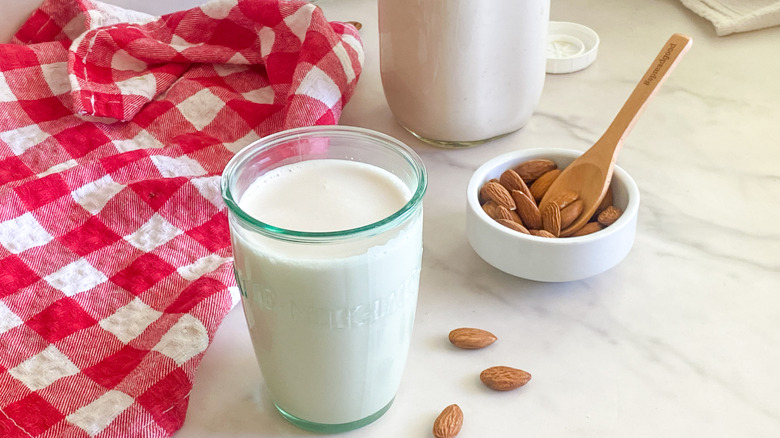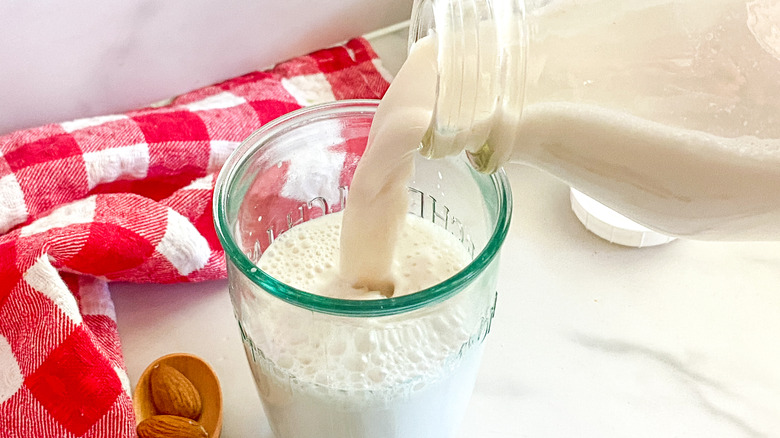The Ratio To Follow For Thicker Homemade Almond Milk
Whether you're plant-based or not, almond milk is a train you should definitely hop on. It's refreshing, low in calories, and a great source of vitamin E. While there are many decent brands of almond milk to choose from, the best is still the one you make at home — especially if you're following our delicious vanilla almond milk recipe. A huge perk of making your own almond milk is that you can tailor it exactly to your liking. The flavor and consistency are both within your control. If you're dreaming of creamy almond milk and find the store-bought options far too watery, you can easily thicken your homemade milk by adjusting the almond-to-water ratio. Instead of using 1 cup of almonds to 4 cups of water (like it's noted in our recipe), use 2 cups of almonds to 4 cups of water. If the milk still feels too thin for you, reduce the water content to only 3 cups.
Because you'll be using more almonds, you have to be mindful of the strength of your blender. The best blenders on the market won't have an issue with this ratio adjustment, but if you're using an older or less powerful blender, you might have to blend the nuts gradually. Make sure your almonds are well-soaked (at least four hours, even better overnight) because they'll be softer and easier on the blades. Trust us, this is not a step you should skip if you love your blender!
The consistency of your almond milk depends on how you plan to use it
Consistency matters when choosing an alternative milk because it significantly impacts the texture of the dish you're making. Thinner almond milk is fine for cereal, cookie recipes, or fluffy scrambled eggs. But you'll definitely want a thicker consistency when you're making decadent hot chocolate or overnight oats that taste like dessert for breakfast. That thick consistency might also be your preference when you're drinking almond milk plain and want it to have a proper milky texture rather than feeling like almond-flavored water. Depending on the planned use for your recipe, you can play around with the almond-to-water ratio and make the perfect batch for each individual dish you're creating.
Speaking of flavor — adding more almonds to the ratio means your milk will taste nuttier, obviously. While that's deliciously acceptable in our book, you might need to adjust the flavor a bit to fit with your preference. You can flavor the milk with flavor essences, your fruit of choice, liquid sweeteners, or spices such as cinnamon and cardamom. Ultimately, the true magic of making your own dairy-free milk at home is that you are the artist and the recipe is yours to perfect. Store-bought milk who?

